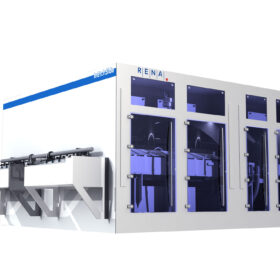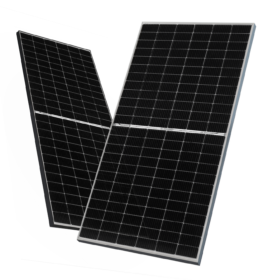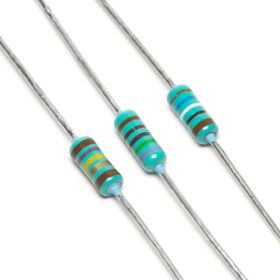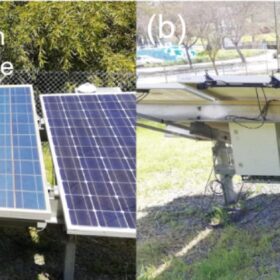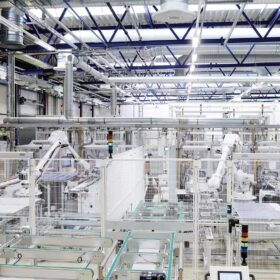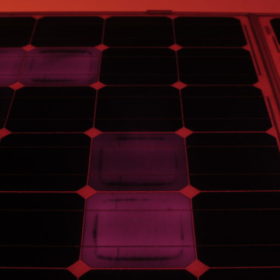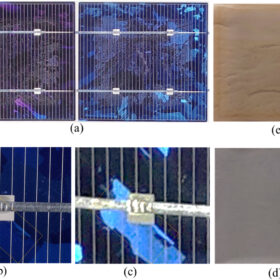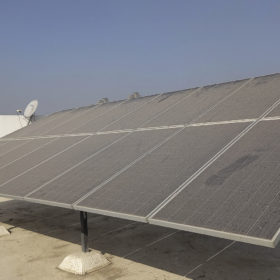RENA announces 1.8 GW sale for new TOPCon equipment
German company RENA Technologies has announced the first sales of a new tool for silicon cell manufacturing. The tool is used for etching/removal of unwanted material on one side of a solar cell, and will be integrated into the gigawatt-scale production of an unnamed manufacturer in South Asia working with TOPCon technology.
TOPCon PV modules outperform PERC by more than 5% in energy yield tests
A study by TÜV Nord in Malaysia shows that the latest generation of tunnel oxide passivated contact (TOPCon) modules surpass their older rivals on energy yield. The researchers compared n-type TOPCon modules with older p-type PERC modules, both manufactured by JinkoSolar over a three-month period earlier this year. The newer product showed an energy yield 5.69% higher than its PERC counterpart.
Using shunts to spot PV module degradation
Scientists in Ireland investigated the effect of shunt resistance on a PV cell’s electrical performance. The group says its finding could potentially lead to the development of models for early detection of various forms of cell degradation, allowing for intervention to repair or replace components before major power losses occur.
Machine learning keeps solar one step ahead of soiling
Scientists in Cyprus evaluated six different models used to predict the power losses caused by the accumulation of dust, dirt, and other substances on the surface of PV panels in the island’s arid climate. Results from the various models were compared with soiling loss data from a “test bench” installation at the University of Cyprus in Nicosia, revealing a potential advantage for machine-learning approaches backed by satellite data.
Weekend Read: Waiting is not an option
In May 2022, PV experts from around the world convened in Germany for the third Terawatt Workshop. Almost one year later, takeaways from discussions at the workshop – combined with a wide-ranging review of research on decarbonization pathways, energy demand projections, and the state of the art in PV technology – led to the conclusion that 75 TW of installed solar capacity by 2050 was a realistic global target. More than 50 leading PV industry figures recently outlined the opportunity and the challenges that solar will face in reaching this goal.
Test shows higher yield, lower degradation for n-type solar modules
Research carried out by China‘s National Photovoltaic Quality Inspection Center shows that new n-type TOPCon modules are living up to their promise, outperforming the previous generation of p-type PERC products. Data gathered over six months from a fixed-tilt PV system showed that the n-type products produced 3.69% more energy, and also suffered much lower performance losses.
Thirty years of photovoltaic module degradation
Scientists in Europe have put together a comprehensive guide to PV module degradation, examining literature and case studies on the topic as far back as the 1990s. Their paper details the primary stress factors faced by modules in the field, the most common modes of degradation and failure, and provides clear definitions relevant to reliability, quality and testing standards. Among their key findings is that a full understanding of how combinations of different stresses over varying timeframes is still missing from methods to estimate and improve system reliability.
Protecting solar cells from UV light
Scientists in France tested the effectiveness of various encapsulant materials, used to laminate solar cells into modules, at protecting cells and other components from damage caused by ultraviolet (UV) light. Their findings show that encapsulants with additives specifically designed to absorb UV light tend to turn yellow over time, which can contribute to various other problems with performance.
Keep your solar cells dry
Scientists in Norway used various imaging and characterization techniques to analyze the cells and other components of silicon PV modules that had been installed in the field for more than 10 years. The group’s aim was to isolate the role of moisture in various mechanisms that cause performance loss over time, and to understand how these mechanisms progress over long-term installation in real outdoor conditions.
Inside the impacts of soiling
Scientists in India carried out a comprehensive study into the impacts of soiling on PV modules – measuring the amount of performance loss caused by different types of dust and bird droppings, and for modules installed at various tilt angles, in the hot-dry climate of Vellore in southern India. Their findings could allow developers to better take into account and mitigate the effects of soiling during site selection and system design.

